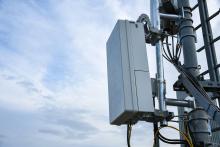Of course, as with most new technology areas--particularly networked ones--there are many possible gotchas. These include a highly fragmented device market, application-usage scenarios that differ widely from those of their desktop counterparts, and a limited number of turnkey applications. Organizations are already struggling with supporting PDAs, many brought in unofficially by employees. Finally, there are the difficult questions such as how much real-time information do workers need and what percentage of workers need this level of access. Indeed, a lack of clear business justification was a key concern cited by poll respondents. For help tackling these questions, see "Easy Wireless, Tough Choices,".
The Platforms
We've said these platforms are powerful, but what does that mean, exactly? A typical four-to-five-ounce device might offer the following: a 65,000-color display with 200x200 pixel resolution, data throughput rates over cellular networks in excess of 100 Kbps, a multitasking OS, a mail client supporting multiple messaging protocols, an SMS (short message service) client, an MMS (multimedia messaging service) client, IM (instant messaging), a browser that supports WAP and XHTML, Bluetooth and IR (infrared) capabilities, Java support (based on Java 2 Micro Edition), 16 MB of memory and removable storage expandable to 1 GB or more. What's not to like?
So, how do you pick the right device for your enterprise? Carefully. There's a variety of platforms, and different devices running on the same platforms are not necessarily compatible with one another when it comes to applications. There's also the question of whether the device should be used for data, voice and data, or mostly voice--you can't have it all.
Declining sales in the conventional PDA market and surging sales in the smartphone market strongly suggest that many users prefer to carry only one device. The mobile telephone is a must. Ergo, to the extent that a phone can subsume PDA functions, the PDA becomes unnecessary. But portability is key: Users like their petite cellphones, but for a smartphone to be effective, it must have a reasonably large display, and in some instances, a miniature keyboard. The industry will have to demonstrate significant business or personal value to win over the miniphone crowd while convincing PDA users they aren't giving up too much.








